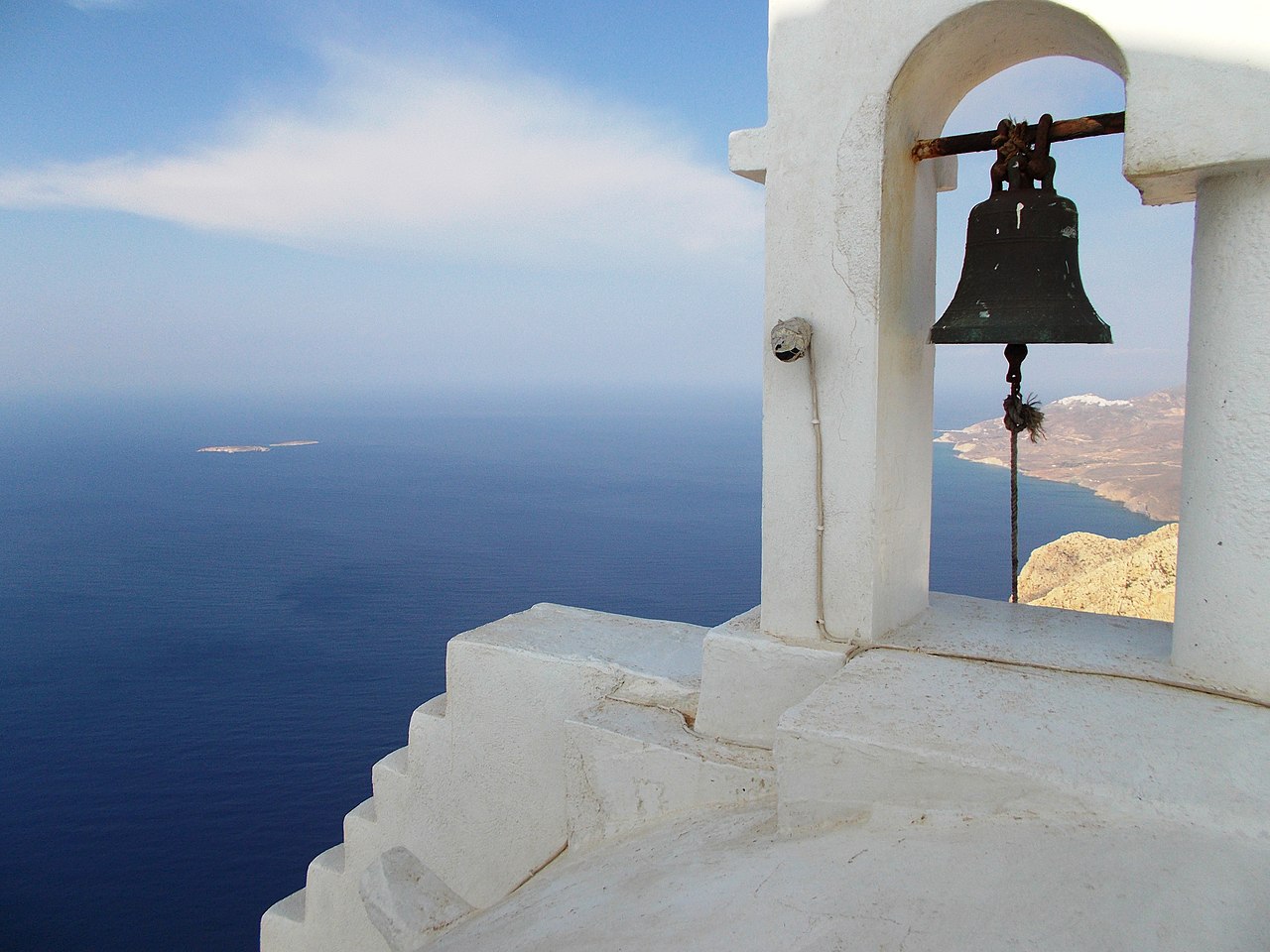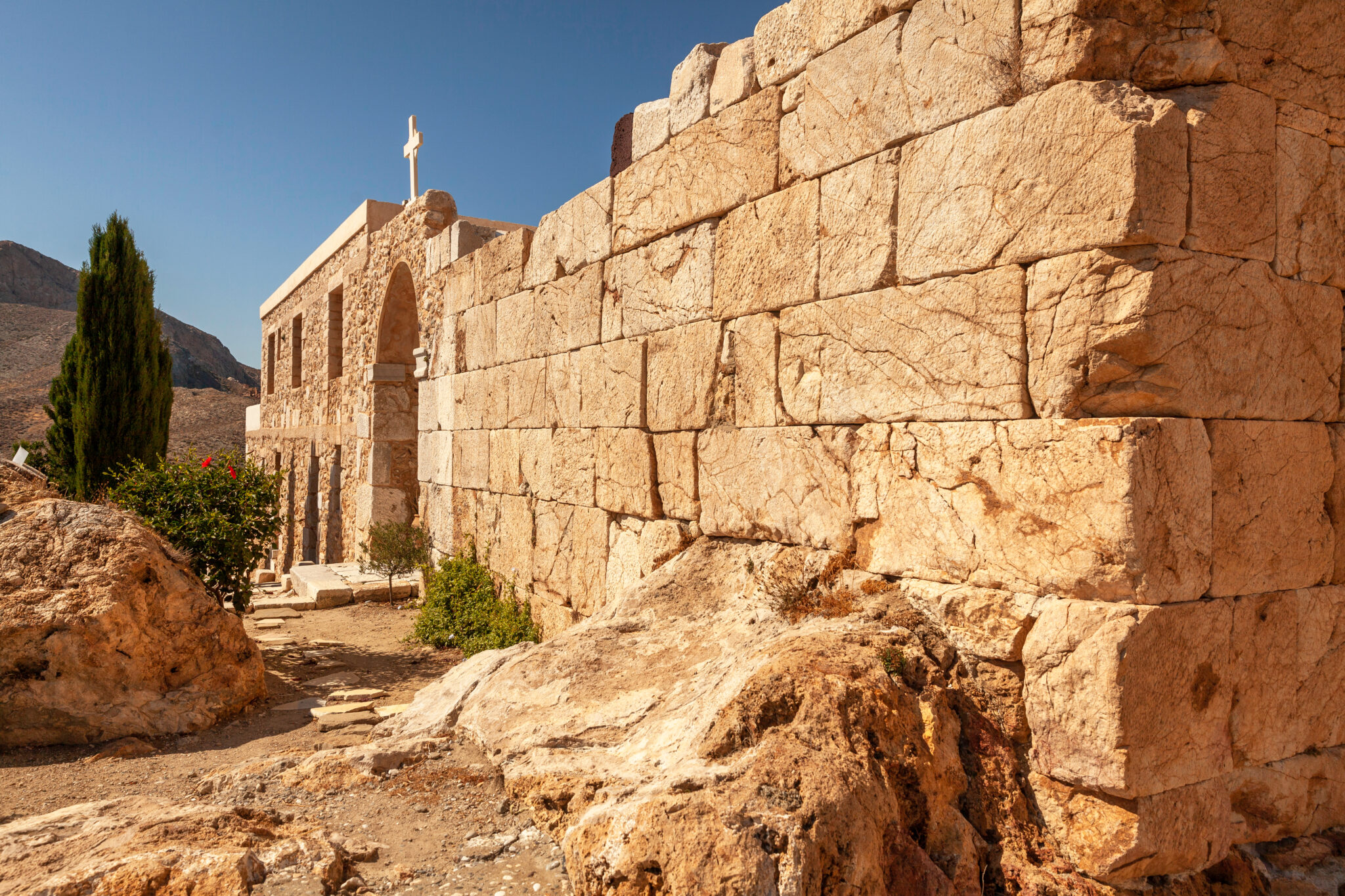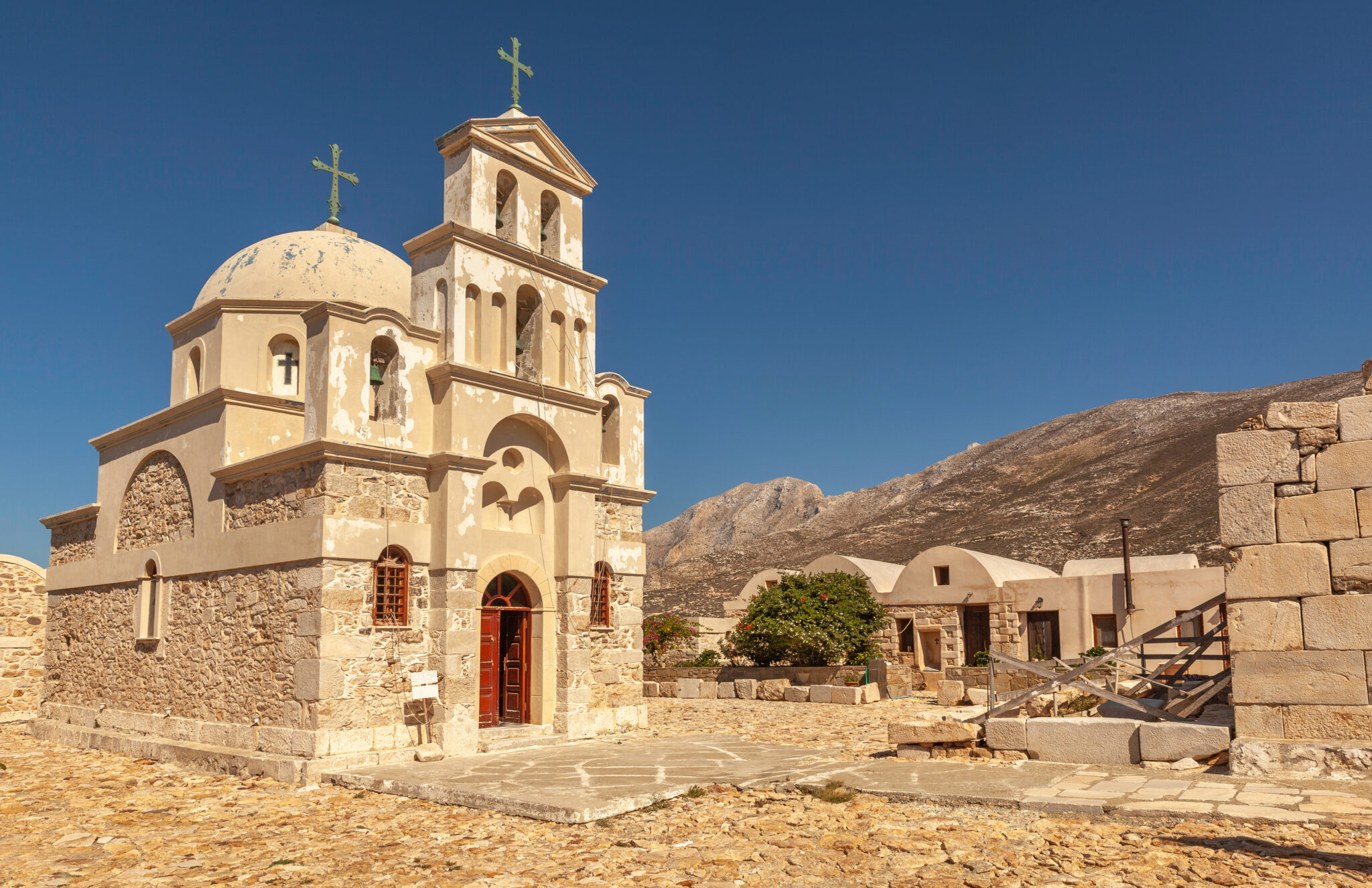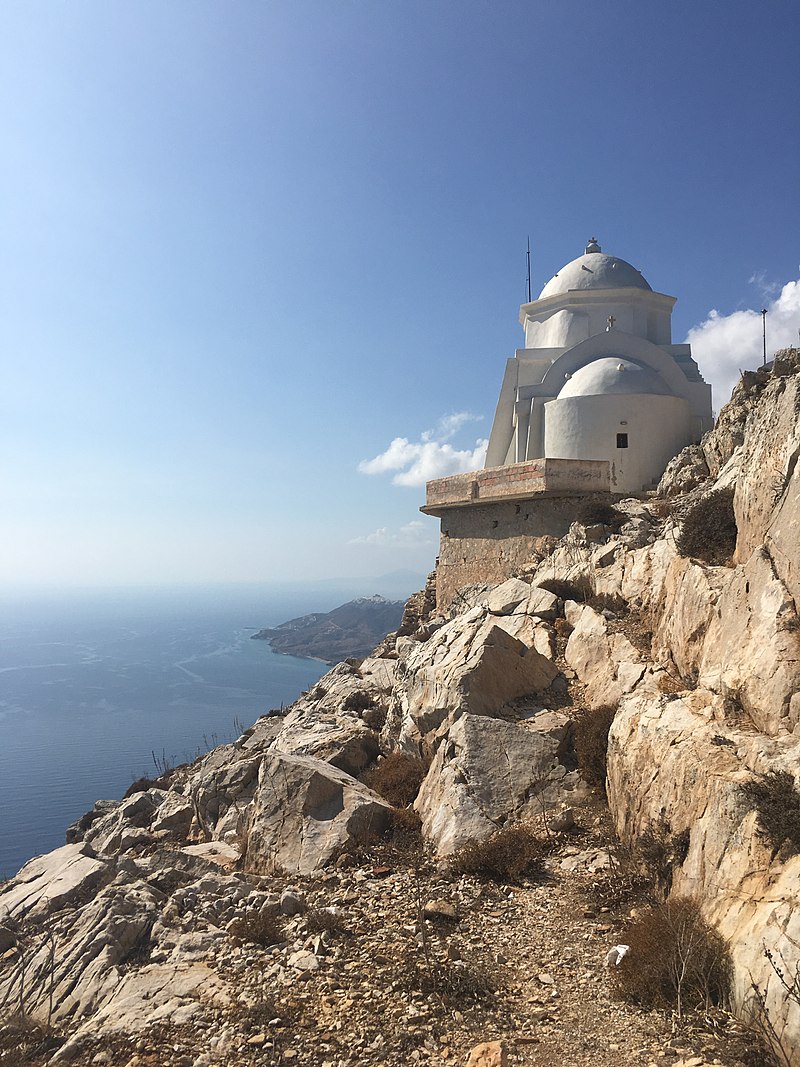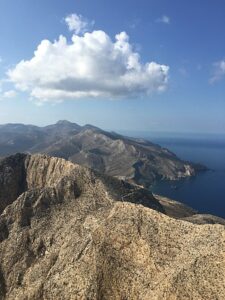Mythically, archaeologically and culturally rich beyond its apparent influence, Anafi surprises with its unique sites and traditions. In summer, many evenings of dancing and feasting are held to celebrate the name days of saints, and the municipality hosts art and culture exhibitions displaying the island’s folklore heritage.
Monastery of Zoodochos Pigi
Constructed during the 17th century, the monastery sits at the foot of Kalamos on the narrow isthmus that separates the peninsular from the island, and it was built on the site of the ancient sanctuary of Apollo Aeglitis with much of the former temple being incorporated into the enclosure of the modern day monastery. It has functioned as a point of pilgrimage since Ottoman times and not just within Anafi itself.
The most important religious festival on the island takes place on September 7th and 8th, the feast of Panagia Kalamiotissa. In older days, the whole island, except the old and the infirm, would decamp to the monastery, along with pilgrims from Santorini for a night of worship, dancing and feasting. The next morning the villagers would return to Chora and continue the celebrations.
Ancient City at Kastelli
The ancient residents of Anafi chose a naturally fortified hill 330 metres high to the east of the current Chora to build their settlement. The city was probably established in the 8th century BC by Dorian colonists. Nowadays, only the outline of the walls and some ruined walls remain. On the northeast side a necropolis was discovered with cave tombs adorned by marble statues dating to Roman times when the island flourished. An impressive sarcophagus from this era is located next to the whitewashed church of Panagia sto Dokari on the path to Kastelli.
Archaeological Collection of Anafi
Statues, inscriptions, and funeral reliquary from Roman and Hellenistic times are found in this one room museum next to the community building in Chora. Mostly from the site at Kastelli, the finest finds are abroad in national collections having been sold or taken in the 18th century.
Monastery of Panagia Kalamiotissa
Perched on the top of Kalamos, the church is dedicated to the Assumption of the Virgin Mary, and according to myth the miracle working icon of the Virgin was found near to the monastery, hanging on a reed. Construction on the monastery began around 1600 and it is a domed single nave church with a double arched bell tower. Uninhabited, today the monastery is accessed by a ninety minute trekking path from the lower monastery of Zoodochos Pigi. A popular option is to hike in the evening to catch the sunset then sleeping over, waking at sunrise to enjoy the incredible views.
Mount Vigla
At a height of 579 metres, Mount Vigla is the highest point on Anafi. The path to the top is rough and narrow but the views from the summit over the island and out over the archipelago are stunning. If the weather is clear you can distinguish Astypalaia, Amorgos, Ios, Naxos, Santorini and numerous islets. No wonder the ancient residents had set fryktories here, fire signals to communicate with other islands.
Agios Antonios Byzantine Church
Seemingly hooked onto the steep northern coastline of Anafi, the church of Agios Antonios is reached on a hiking trail. The small whitewashed church dates from the Byzantine era and belongs to the famous Hozoviotissa Monastery of Amorgos, a similarly rock clinging place of worship. Two vaulted rooms with arches house vivid frescoes that date back to the 14th century. The views over the Aegean are worth the climb alone.
Read also:
Piso Livadi: A small, peaceful seaside village in Paros, with excellent food
A Triumvirate of Tasty Stops on the Greek Island of Naxos



